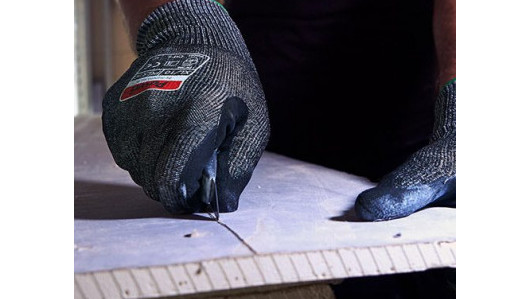The Best Cut Resistant Gloves
Published: Wed 13 Oct 2021

The way that safety gloves are tested has changed over time. In part, this is due to the increased importance placed on the health and safety of employees, but it is also a reflection of improving hand protection technology. For those tasked with providing high cut resistant gloves, it’s important to familiarise yourself with how the testing works. This will help you to ensure that the optimum protection is specified.
Here are 3 cut testing facts you should know about:
The TDM - 100 Straight Blade Test
This is the one that got everyone talking. Introduced in the 2016 update to the EN 388 standard, it was brought in to provide a more ‘real world’ test for protective gloves. Over the last decade, anti-cut fibre technology has advanced to the point where the blade used in the original coupe test was being blunted, leading to inconsistent results.
The updated test measures the amount of force required for a new, straight blade to cut through the glove liner material at a constant speed of 2.5mm/s over a distance of 20mm. It illustrates the results in letter form - F being the highest and A being the lowest.
Who does the testing?
Testing for cut resistant gloves should be carried out by an independent, UKAS (United Kingdom Accreditation Service) testing lab. There are a range of accredited labs, including TUV, SATRA, Intertek, SGS, and CTC.
These certificates are freely available to view and download on our website, to help provide peace of mind that gloves have been tested rigorously and fairly.
More than just cut
There’s more to mechanical resistance than just cut protection. The EN388:2016 standard also covers abrasion, tear, impact, and puncture. This is where it is important to carry out an audit of the type of tasks, and therefore hazards, an operator is likely to encounter in their day-to-day job.
-
Published: Sun 25 Aug 2024
How to Choose the Right Safety Boots for Your Job
-
Published: Mon 29 Jan 2024
Printing vs Embroidery - Which is Right for You?
-
Published: Fri 05 Jan 2024
Choosing the Perfect Workwear: A Guide for Small Businesses
-
Published: Thu 28 Dec 2023
Why Choose Eco-Friendly Workwear?
-
Published: Sun 24 Dec 2023
Choosing The Right Hi Vis Clothing For Your Team
-
Published: Tue 19 Dec 2023
How to Leverage Personalised Work Uniform to Boost Your Brand
-
Published: Mon 27 Nov 2023
A Heartfelt Thank You to Our Valued Customers!
-
Published: Fri 29 Sep 2023
Women's PPE and Workwear
